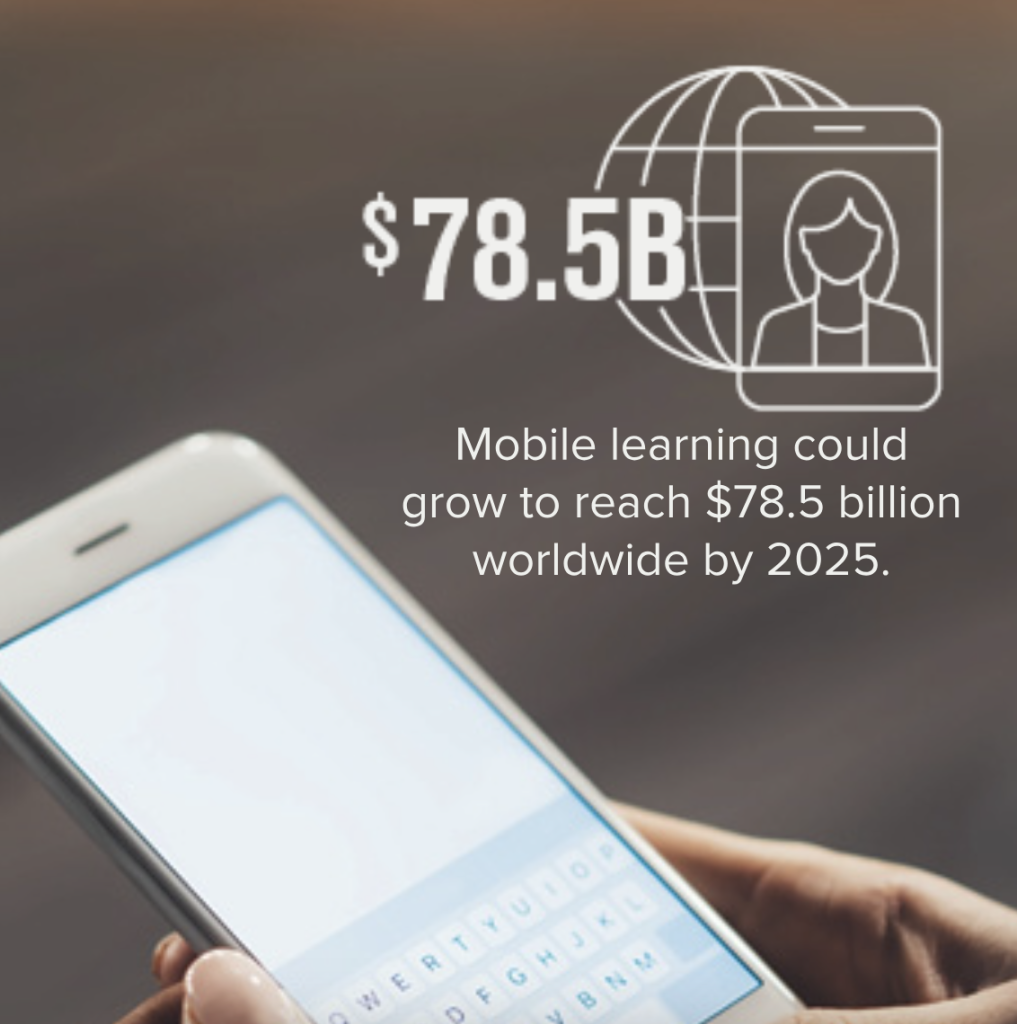What do you do in the face of uncertainty? I’ll bet you learn to pivot — and quickly! In early care and education (ECE), a huge pivot occurred in training and professional development in the past few years.
In 2020, instead of in-person formats, we all quickly transitioned to completely online. As a result, many educators were suddenly thrown into a new world of technology — and many embraced it enthusiastically.
eLearning is flexible, cost-effective and convenient. Given that onsite training will be unavailable for the foreseeable future, more people have had to try eLearning than ever before.
So, what trends do we see for the future in professional development — and what do they mean for you? Let’s take a look!
Mobile-Friendly Learning

Without a doubt, mobile delivery is a trending direction for eLearning. Digital content is intentionally “shrunk” down to display clearly and easily on a mobile device screen. Increasingly, people are connecting to the internet exclusively through their mobile devices.
Overall, 17% of Americans are now “smartphone only,” and this number has doubled since 2013. Research also shows lower-income adults are more likely than adults in higher-earning households to use only their smartphone to access the internet. And, the percentage is even higher for some racial and ethnic groups. (Pew Research Center, 2019).Key Takeaway:
It’s likely that today’s ECE learners require eLearning to be mobile-friendly. Therefore, eLearning providers will have to meet this need.
Using Games to Engage eLearners
Think about it: How easy is it to disengage from online learning? You can just click off, walk away or multitask. One guaranteed way we lose learners is to simply publish a Powerpoint online. Why? It’s a passive presentation.
The use of games — or “gamification” — is one interactive solution that providers can build into eLearning of all kinds.
A recent survey highlights what a difference games can make: 83% of learners who receive gamified training feel motivated, but 61% who receive non-gamified training feel bored and unproductive. What’s more, 33% would like more game-like features in their employee training software. (TalentLMS, 2019)
Gamification helps learners test their knowledge and get immediate feedback. Adding gamification to learning can take many forms. An on-demand course can use “drag-and-drop” game activities. While in a live online format, instructors can creatively simulate a game context through multiple choice questions, polls, and chat tools.

Key Takeaway:
As online learning continues to dominate the professional development field, eLearning providers must continue to include learner engagement strategies through gamification and other online interactive features to boost learning and transfer of knowledge.Microlearning
Bite-size learning — or microlearning — is “in.” Millennial and GenZ learners expect targeted and timely delivery: They want what they need, when they need it! Actually, all our brains are naturally wired to learn this way.
Microlearning is delivered as short, focused sessions — usually about two to eight minutes, often as video clips. It’s all easily digestible and reduces cognitive load.
While not a new concept, microlearning has recently gained popularity in early care and education. In particular, the younger generations embrace this form of learning.
Microlearning has a number of great advantages. Generally, microlearning can be:
* Taken on any device
* Focused on specific learning outcomes
* Used for a refresher or quick tutorial
* Created as complete, stand-alone training units
Key Takeaway:
While it may seem counterintuitive if you grew up on lectures, microlearning is an effective and modern way to learn. Microlearning will continue to grow in popularity.
Virtual Conferences
Are onsite conferences a thing of the past? When they came to an abrupt halt in early 2020, we all pivoted to virtual formats and learned to flex.
Regardless of when we return to “normal,” I believe virtual conferences will continue.
Despite technical glitches and loss of in-person networking, there are simply too many upsides:
* Virtual conferences offer convenience, affordability and flexibility.
* They save time and money in travel.
* Training has a longer shelf life; because sessions can be recorded and made available.
Key Takeaway:
As best as you can, embrace the benefits of the virtual conference format. Don’t postpone your professional development because you’re waiting for the return of the onsite conference.Hybrid Training

Hybrid training combines in-person and online elements, and it has several unique benefits. Trainers can efficiently deliver informative content online (live or recorded). And they can use face-to-face gatherings constructively for in-depth discussions, peer networking, role-playing, and so on.
Once the world ventures back to in-person events, I expect many trainers and organizations will still choose to use some form of hybrid training to reduce travel expenses.
Key Takeaway:
Online learning is here to stay in one form or another. If you have personal resistance to it, what can you do to find a bit of acceptance or openness within yourself?Soft Skills and Work-Life Skills
Apart from trends in the mechanics of eLearning, I would be remiss not to mention the growing focus and need for training in soft skills.
The pandemic has caused stress and anxiety to run high among employees. There’s a heightened need for our directors and teachers to embrace soft skills such as empathy and emotional intelligence. These skills help us effectively support and communicate with staff. The soft skills category also includes topics in leadership, diversity and human resources.
We also find teachers reassessing their lives and seeking greater happiness and contentment. To meet their goals, they want training in topics that may not directly apply to their position or simply meet mandatory requirements.
Key Takeaway:
In ECE, we often think about providing training to meet regulatory and knowledge requirements. Increasingly, our workforce needs — and wants — soft skills training, too.Wrap Up
As we look to 2021 and beyond, we must recognize a few realities. One is 2020 caused the early care and education workforce to pivot into eLearning much more quickly than otherwise.
Secondly, we have to be ready for modern workers — and that means eLearning. By 2025, millennials will make up 75% of the workforce, and GenZ is not far behind. Growing up in a technology-driven world, these generations expect learning to be accessible and personal.
Finally, each of us has the opportunity to consider our own relationship with online learning in its many forms. Whether we currently embrace them or not, they are likely to remain a prevalent way to deliver learning in our modern world.
Don’t Forget!
For success in eLearning, adult learners must FIRST learn — and have access to — the technology for participating. Our teachers’ backgrounds may differ from yours. They will have differing levels of familiarity with eLearning, and they may or may not have access to reliable equipment and broadband. For these reasons it is important to provide the necessary learner support.
